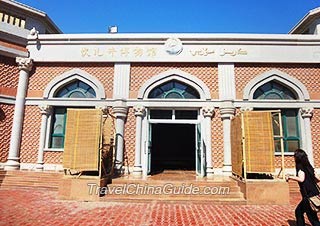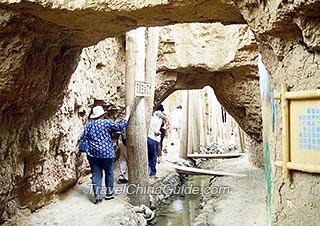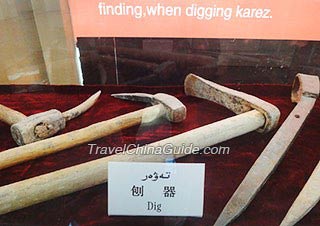Karez System
 |
| Turpan Karez System Museum |
Karez systems are the life source of Turpan. In a sense, without them, there would be no Turpan culture. According to records, the history of the karez in Xinjiang dates back to 103B.C. Currently there are still over 400 systems.
Karez are very delicate irrigation systems made up of vertical wells, underground canals, above-ground canals and small reservoirs. Generally, a karez is 3 km (1.9 miles) with the longest being 20 to 30 km (12-19 miles) with several dozen vertical wells. Sometimes the number of vertical wells exceeds 300. Until today, the shortest karez found is only 30 meters (98 feet) long. The vertical wells are for ventilation, digging and maintenance of the karez. The bottoms of all the vertical wells are connected so that water can pass through. The underground canal is about 2 meters (6.5 feet) high and covered with earth to resist the heat. The surface canals, connected to the underground ones, are not more than 1 meter (3.2 feet) wide with trees planted on both sides to prevent evaporation.
Melting snow from the Tianshan Mountain is the water source of the karez. Water is collected by vertical wells and conducted by the underground canals to the oasis, where the water is held in the ground canals for irrigation. The vertical wells near the water source may be 100 meters (328 feet) deep while further downstream they are less than 10 meters (32.8 feet) deep.
|
|
Karez also functions as the natural air conditioner for the locals because they can sit in one while chatting or doing some chores. When exhausted during the scorching weather, sit in a karez, pick some grapes as they hang over the vertical wells and savour their taste, you will be thoroughly refreshed!
| Admission Fee: | CNY 30 |
- Last updated on Apr. 12, 2021 -

